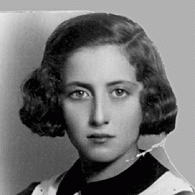You searched for: nazi germany
<< Previous | Displaying results 1176-1200 of 1274 for "nazi germany" | Next >>
-
The Holocaust in Macedonia: Deportation of Monastir Jewry
ArticleIn March 1943, Bulgarian authorities transported the entire Jewish community of Monastir to a transit camp from which they were deported to Treblinka.

-
Elie Wiesel
ArticleElie Wiesel was a human rights activist, author, and teacher who reflected on his experience during the Holocaust in more than 40 books. Learn more.

-
Gusen
ArticleIn 1940, the Nazis established Gusen concentration camp. Learn more about camp conditions, forced labor, and liberation.
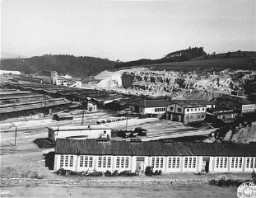
-
William (Bill) Lowenberg describes forced labor in the Kaufering subcamp of the Dachau concentration camp
Oral HistoryAs a boy, Bill attended school in Burgsteinfurt, a German town near the Dutch border. After the Nazis came to power in Germany in January 1933, Bill experienced increasing antisemitism and was once attacked on his way to Hebrew school by a boy who threw a knife at him. In 1936, he and his family left Germany for the Netherlands, where they had relatives and thought they would be safe. However, after Germany invaded the Netherlands in May 1940, antisemitic legislation--including the order to wear the Jewish…

-
Incitement to Genocide in International Law
ArticleAfter the Holocaust, the IMT charged the first case of “incitement to genocide.” Learn more about the crime and its application in modern genocide law.
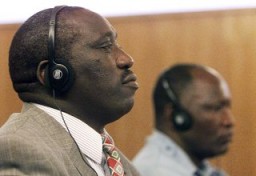
-
Flossenbürg
ArticleLearn about the Flossenbürg camp from its establishment until liberation in April 1945, including conditions, forced labor, subcamps, and death marches.

-
Japanese American Relocation
ArticleLearn more about the forcible relocation of some 120,000 people of Japanese descent living in the US to “relocation centers.”

-
President Obama's Remarks at Buchenwald
ArticlePresident Barack Obama visited Buchenwald concentration camp in Germany on June 5, 2009. In a speech at the site, he repudiated Holocaust denial. Browse transcript.
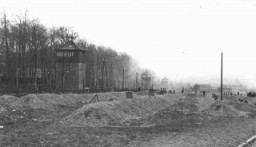
-

-
Treblinka
ArticleTreblinka was one of three killing centers in Operation Reinhard, the SS plan to murder almost two million Jews living in the German-administered territory of occupied Poland.

-
Lutz Haase
ID CardLutz was one of two children born to religious Jewish parents living in Wrzesnia when it was still part of Germany. After World War I, Wrzesnia became part of Polish territory. Preferring to remain as German citizens, Lutz's family moved to Nuremberg. There, his father opened a kosher butcher shop. In 1926 the Haases relocated to Berlin and reestablished their butcher shop there. 1933-39: Like many of Berlin's Jews, Lutz was assigned by the Gestapo to a work detail in 1937. He laid electrical cable for…
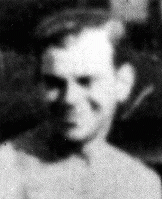
-
Simone Weil
ID CardSimone was the oldest of two children born to a Jewish family in the small village of Ringendorf. When she was 3 her family moved to Strasbourg. Her father made his living breeding sheep. Simone and her younger brother were both active in a Jewish scouting organization, Les Eclaireurs Israelites de France (EIF). Simone attended a public secondary school in Strasbourg. 1933-39: In addition to attending secondary school for five days of the week, Simone also went to a Jewish religious school on the other…

-
David Bayer
ID CardDavid was the second of four children born to religious Jewish parents in Kozienice, a town in southeastern Poland. His father, Manes, owned a shoe factory that supplied stores throughout the country. His mother, Sarah, took care of the home and children, and helped in the factory. Kozienice had a thriving Jewish community that constituted over half of the town's population. 1933–39: For most of the 1930s, David spent his days going to school, playing sports, and working in his father's shoe factory.…

-
Moniek Rozen
ID CardOne of 12 children, Moniek grew up in Dabrowa Gornicza, an industrial town in western Poland. His father, Jacob, owned a general store, which he was forced to close in 1938 as the result of a boycott by local antisemites. Moniek attended both public and Jewish schools, and his father hoped that one day he would become a rabbi. 1933–39: On September 1, 1939, Moniek was awakened by the sounds of airplanes flying overhead as German forces invaded Poland. As the war drew closer, Moniek fled eastward, but…
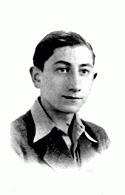
-
Elzbieta Lusthaus
ID CardElzbieta grew up in Iwonicz, a resort town in southwestern Poland noted for its mineral water. Her father, Edmund, was a respected physician and Helena, her mother, had studied pharmacology. At home, they spoke Polish and were among the few Jewish families who lived in Iwonicz. 1933–39: When German troops invaded Poland on September 1, 1939, Elzbieta's father was drafted into the Polish army. Seventeen days later, the Soviet army drove in from the east and Edmund was captured. He was transported to a…
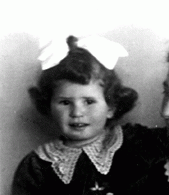
-
Barbara Ledermann
ID CardBarbara was the older of two daughters born to Jewish parents in Germany's capital, Berlin. Barbara's father was a successful lawyer. As soon as Barbara was old enough to walk, he would take her around Berlin to see the sights and tour the city's art museums. Barbara liked to go horseback riding and dreamed of becoming a dancer. 1933-39: After the Nazis came to power in January 1933, it was illegal for Barbara's father to have non-Jewish clients. His law practice quickly folded. Later that year when…
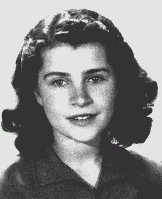
-
Cecilie Klein-Pollack
ID CardCecilie was the youngest of six children born to a religious Jewish family in the Czechoslovakian town of Yasinya. Her father, who was from Poland, taught private lessons in math and German. The family owned a small grocery store, which Cecilie's mother managed. 1933-39: Cecilie's father died in 1934 when she was 9. In March 1939 Hungary, which was sympathetic to Nazi Germany, annexed the area of Czechoslovakia where they lived. One day, Cecilie arrived home to find her mother and sister had been arrested…
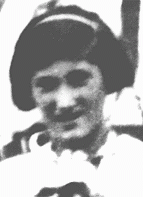
-
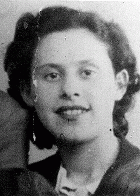
-
Samson Reichstein
ID CardSamson was raised by Jewish parents in Tarnopol. His father died when Samson was 13, and Samson went to work to help support his mother and four brothers and sisters. In October 1918 Samson married Kaethe Ert, and the couple moved to Hanover, Germany, where Samson worked as a traveling salesman. Their son Herbert was born in 1920. 1933-39: In 1938 Samson and Kaethe got their son an exit visa on America's Polish quota (since they were Polish citizens). Later that year, the Gestapo came to their door with…
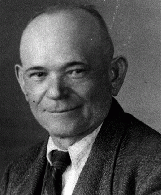
-
Esther Morgensztern
ID CardThe fourth of five children, Esther was born to Jewish parents living 35 miles east of Warsaw in the small predominantly Jewish town of Kaluszyn. Esther's mother and grandmother ran a newspaper kiosk in the town, and her father worked as a clerk at the town hall. 1933-39: Next year would have been Esther's last year at school, but she won't be able to graduate. War has broken out between Poland and Germany, so the schools have closed. A big battle took place here in Kaluszyn. The town was heavily shelled…
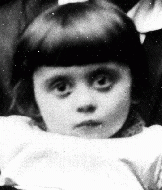
-
Meyer (Max) Rodriguez Garcia
ID CardMax was born to a Jewish family in Amsterdam. He lived in a working-class district occupied by many diamond polishers, of which his father was one. In the 1920s and 30s Amsterdam was a cosmopolitan city with a diverse population. Though his father hoped Max would follow him in the diamond trade, Max dreamed of becoming an architect. 1933-39: Max's happiest years were with close friends in school. His father encouraged him to learn by bringing home newspapers to help his English. After 1933 German Jews…
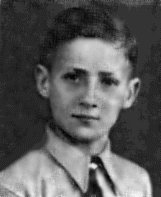
-
Pinchas Galperin
ID CardPinchas was one of 16 children born to a Jewish family. Only nine of the Galperin children lived to adulthood. Pinchas' father worked as a typesetter for a Jewish newspaper and his mother ran a small grocery store. After World War I, Pinchas married Sara Bernstein and the couple moved to Siauliai, Lithuania, where they raised three children. 1933-39: Pinchas and Sara owned and ran a dairy store where they sold milk, butter and cheese that they bought from local farmers. Every morning they would rise early…
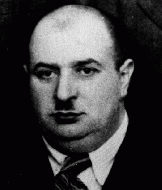
-
Andras Muhlrad
ID CardThe second of two children, Andras was born to Jewish parents living in a suburb of Budapest. His father was a pharmacist. The Muhlrads lived in a large house with Andras' grandfather and aunts. As a toddler, Andras often played with his older sister, Eva, and their cousins in the big yard behind their home. 1933-39: Andras was 4 when his family moved to their own apartment. It was 1936 when he began primary school and Hitler had already been in power in Nazi Germany for three years. At night his father…

-
Paul Matasovski
ID CardPaul was one of three children born to Jewish parents. They lived in a small city with a large Jewish population in central Moldavia. Paul's Ukrainian-born father had been stationed in Romania during World War I, and chose to remain there rather than return to Ukraine after the 1917 Russian Revolution. 1933-39: Paul's household observed the Jewish holidays. He loved Passover with its special meals and the opportunity to show off new clothes. On the radio his family heard about the Nazis in Germany; in…
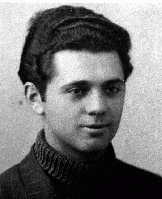
-
Erika Neuman
ID CardErika was born in Znojmo, a town in the Czech region of Moravia with a Jewish community dating back to the 13th century. Her father was a respected attorney and an ardent Zionist who hoped to immigrate with his family to Palestine. In 1931 the Neumans moved to Stanesti, a town in the Romanian province of Bukovina, where Erika's paternal grandparents lived. 1933–39: In Stanesti, Erika attended the public school as well as the Hebrew school, which her father had helped to found. She loved to play with her…
